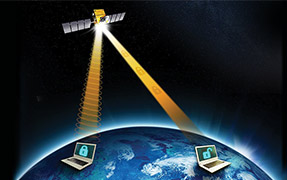Lidar has a crucial role to play in improving road safety—if the price is right

According to the World Health Organization, every 24 seconds someone dies on the road. In the US alone, more than 46,000 people die every year in crashes, with an additional 4.4 million injured seriously enough to require medical attention. The figures are astounding, and it is not just the human cost: The economic and societal impact of road crashes cost US citizens $871 billion in 2014, according to the Association for Safe International Road Travel. The US suffers the most road crash deaths of any high-income country, about 50 percent higher than similar countries in Western Europe and in Canada, Australia, and Japan.
Automotive manufacturers have responded with a barrage of safety features that include autonomous safety technology such as autonomous emergency braking and collision warning systems. The safety systems on production cars today utilize radar, ultrasonic sensors, and cameras, but still, the deaths and injuries show no sign of abating. In an attempt to decrease these numbers, the automotive sector is turning to lidar to enhance these safety features.
Light detection and ranging, or lidar as it is more commonly known, is a cornerstone technology for the fully autonomous car. It also has a role in driver safety systems in current road vehicles. However, its development is moving in diverse paths, with some manufacturers concentrating on developing the mechanical lidar systems seen on autonomous test cars or Google’s street-mapping vehicles. Other companies are looking at solid-state lidar or lidar-on-a-chip as the way forward.
Fully autonomous driving would require a system that can detect objects hundreds of yards ahead. This is where lidar comes into play. The challenge is when you want to see something like a tire 300 meters down the road. Because tires are black, they would only reflect back about 10 percent of the lidar light emitted.
But autonomous cars are still on the drawing board, and while they are being developed, lidar will play a vital role in safety for modern production cars. Most automobiles now feature advanced driver assistance systems (ADAS). These include active driving assistance, automatic emergency braking, lane-keeping assistance, and adaptive cruise control. These systems use a combination of cameras, ultrasonic sensors, and radar, but they have limitations. The American Automobile Association conducted a study last year in the US and found that the sensors that support ADAS fail or give false positives or negatives once every eight miles.

Luminar’s IRIS lidar system is aerodynamically integrated with an automobile’s roofline. Photo credit: Luminar
Jason Eichenholz, co-founder and chief technology officer at Luminar, is among those who believe that mechanical lidar systems have a critical role to play in improving automotive safety. “The performance in current ADAS systems is lackluster, and drivers are incredibly dissatisfied with many new safety features,” he says. “Many switch off their ADAS systems.”
A mechanically scanning lidar system can collect data from up to a 360-degree area. To enhance the safety of its cars, Volvo integrated Luminar’s IRIS lidar system in its EX90 model unveiled in November 2022. This SUV features traditional cameras, sensors, and radar, along with a roof-mounted lidar system.
“We are taking the lidar that we have today, which is mechanical, and we are bringing that into production,” Eichenholz says. “This will enable a driver out-of-the-loop operation for the first time. We saw the opportunity to have a lidar system that offers spatial resolution with radarlike range. As a result, we can simultaneously unlock autonomy, starting on the highway for the consumer, and take safety to the next level with proactive safety.” That is, if the sensor suite has been designed for autonomous driving via lidar, the added benefit is improved safety on the road regardless.
In the Volvo EX90, the lidar is aerodynamically integrated into the car’s roofline. It looks no different than a radio or XM antenna. “It took a long time, but we are talking to automobile manufacturers that have more than a dozen motors inside their cars already, so adding a few more motors, if done correctly—and that is the key—is not something they are fighting back on,” Eichenholz adds.
Eichenholz explains that he has been hearing the mantra for a decade that today’s mechanical lidar is not fit for purpose when it comes to next-generation applications for the automotive sector. But when it comes to advantages, he points to the field of vision. “You cannot have a narrow field of vision as it cannot detect objects approaching from the side,” he says. “Automakers are demanding 120 degrees field of vision even in highway applications, and no solid-state solution can deliver that.”
Among all required components, the laser plays the most significant role in overall lidar-system performance. Hence, when determining data-acquisition requirements for a lidar system application, it is usually the laser specifications that define the system cost, performance, and feasibility. Solid-state lidar sensor arrays count down the roundtrip time for the beam emitted to bounce off an object ahead and return. This measurement of the distance between object and sensor is called time of flight (ToF). With few to no moving parts, solid-state sensors are less expensive and more reliable than scanning lidar.
As part of its development program, Luminar recently acquired Freedom Photonics and its diode-laser technology. Freedom Photonics recently set a world record of more than five watts of continuous-wave optical power from a 1,550-nm diode laser amplifier with nearly diffraction-limited beam quality. It doubles the previous record. Freedom Photonics is working with Luminar to integrate this new laser into Luminar’s next-generation automotive lidar system.
Conventional broad-area, edge-emitting diode lasers offer excellent power conversion efficiency but suffer from poor beam quality. For the past 30 years, the technology has remained the same. Improvements in brightness and efficiency have been steady but incremental. Diode lasers, based on tapered or flared amplifier geometries, offer tremendous potential for increased brightness but have historically suffered from beam-quality degradation problems at high operating currents.
“There has been a goal in the diode-laser field for decades that if you could produce the power equivalent of a fiber laser or a solid-state laser, with nearly diffraction-limited beam quality, you would not need the fiber laser or the solid-state lasers anymore,” Paul Leisher, vice president of research at Freedom Photonics, explains. “Of course, that is a gross oversimplification, but you can imagine why this would be a goal of diode laser people.”
Leisher is adamant about differentiating what Freedom Photonics is doing from the pathway taken by most other companies in the lidar-for-autonomous-driving sector. “There are lots of lidar systems that could be made with a diode laser, without a fiber laser, but these systems are limited in terms of their range and, specifically, their ability to detect dark objects,” he says. Brightness is a figure of merit of power divided by beam quality, so the aim is to have a high-power laser with a very low beam parameter. That figure of brightness is the figure of merit that limits your ability to detect dark objects at a distance.

Freedom Photonics’ chip-scale laser technology was acquired by Luminar for use in lidar systems. Photo credit: Luminar
“What we have developed with our Aura chip changes that equation,” Leisher continues. “It allows using a diode for the first time, even in the corner cases where you are looking for a tire 300 meters down the road. There is only one way presently to do that with a fiber laser. There has always been a trade between beam quality and power in the diode laser world. If you want good beam quality, the power needs to be limited. Conversely, the beam quality will be terrible if you want greater power.
“Our architecture is based on a diode laser design approach called a tapered amplifier, which has also been around for more than 30 years,” Leisher says. “That particular architecture has suffered from a beam quality problem. As you push more and more power, the beam quality goes down.” The situation has plagued the industry. The holy grail for diode lasers is delivering diffraction-limited beam quality from a diode laser producing 10 or more watts, especially at 1,550 nm.
“About four years ago, we began work in this area, and I cannot say how we solved the problem, but I will say it involved identifying the root-cause physics that drives beam-quality limitations and addressing those,” Leisher says. “It is like a fairy-tale story where you go off, work on a problem that everyone thinks cannot be solved, and then realize that a few things have been overlooked. There was no magic. It was hard to understand the physics that drives these devices and develop clever designs that address the root cause of physics limitations.”
Not all automakers agree with the approach taken by Luminar and Freedom Photonics to use lidar to improve road safety. Many European and Asian carmakers are looking to install multiple, miniaturized lidar systems in their cars. According to Marcus Dahlem, program manager for optical 3D sensing at Netherlands-based research institute, imec, there are many reasons why today’s mechanical lidar technologies are not fit for purpose when it comes to next-generation applications for the automotive sector. First, they are too bulky and costly for elegant integration into cars. What’s more, mobility solutions are composed of moving parts, which makes them vulnerable to vibrations and shocks.
Dahlem believes that the solution to lidar’s limitations is to combine all the components into one integrated circuit. This would make them compact, contain no moving parts, and they could be mass-produced at a relatively low cost per device.
“Lidar is crucial for road safety and the development of autonomous cars,” he says. “When we look at lidar, the trend is to move towards miniaturization and cheaper modules, lowering the cost and size, and allowing this to be scalable with high-volume production. We are trying to develop next-generation lidar systems that would be fully integrated on a single photonic chip.”
Dahlem acknowledges that most players are working on mechanical-based scanning systems, working with ToF at wavelengths into 900 nm, which are bulky and expensive. “This is where the big players today operate and sell products,” he says. “We believe the industry will eventually move in another direction, focusing on solid-state beam steering, and at telecoms wavelengths. All of that is driven by miniaturization and cost reduction. It requires silicon photonics to build full systems on a single chip.”
Cost is crucial for lidar to further penetrate the mainstream automobile market. Luminar has already reduced the cost to carmakers to around US $1,000, and their goal is to further reduce that to US $500.
Despite the pressing need to improve road safety, at the present cost level, it is unlikely that lidar will appear in anything but top-of-the-range models until the cost to manufacturers reduces to around the $100 mark. Eichenholz is adamant that cost should not deter the adoption of lidar for automobiles but is wary of the complacency around deaths on the road. He explains that the daily number of US fatalities on the road is equivalent to a 737 jet falling out of the sky. If that happened every day, people would be wary of flying, but there is no such reticence when getting behind the wheel of a car.
“As a society [we have] become complacent with automobile fatalities,” he says. “But humans are horrible drivers. For years, I have heard people talk to me about the ethical questions about self-driving vehicles. I have a contrarian view. What about the ethics of choosing not to put a lidar system on a car purely on cost grounds?”
Mark Venables is an award-winning technology writer who has covered science, innovation, and transformational technology for leading newspapers and magazines for more than 25 years.



